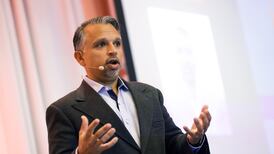The United States Federal Reserve plans to "proceed cautiously" in slowing its asset purchases as the minutes of its December meeting put a dovish spin on the momentous decision to taper its third round of quantitative easing.
In his press conference after the meeting, chairman Ben Bernanke signalled the Fed was likely to slow its purchases by $10 billion at each meeting. The minutes showed that was intended to calm market fears of a quicker exit rather than signal the Fed was in a hurry to end the QE3 programme.
The minutes showed there was a strong consensus behind the Fed’s decision to taper. “Most participants saw a reduction in the pace of purchases as appropriate at this meeting,” they said.
At its December meeting, the Fed decided to slow purchases from $85 billion a month to $75 billion a month, and added new guidance that interest rates were likely to stay low well after the unemployment rate fell below a threshold of 6.5 per cent.
The decision on when to taper drove global financial markets for most of 2013 but the eventual move caused little disruption.
In words reminiscent of the infamous "measured pace" that the Fed used to describe slow interest rate rises in the early 2000s, under then chairman Alan Greenspan, the minutes said asset purchases should be slowed down in "measured steps".
The Fed’s measured pace of rate rises was later blamed for keeping interest rates too low for too long and helping to fuel the house price bubble. The use of similar language again could create concerns about whether the Fed would respond to changing economic conditions.
'Not on a preset course'
In the very next line, however, the minutes tried to answer those concerns with the contradictory message that "the pace of asset purchases was not on a preset course".
Even though most Fed open market committee participants supported the decision to taper, several others “stressed that the unemployment rate remained elevated, that a range of other indicators had shown less progress toward levels consistent with a full recovery in the labour market, and that the projected pickup in economic growth was not assured”.
There were also concerns that inflation was too low, indicating that there was some dissent on the rate-setting committee, and there was still a group that would push for easy policy to support the economic recovery.
In a further signal of the Fed’s willingness to keep asset purchases going if needed, most of the committee said they did not think there would be any reason to stop QE3 because of concerns about bubbles or financial stability.
“Most participants judged the marginal costs of asset purchases as unlikely to be sufficient, relative to their marginal benefits, to justify ending the purchases now or relatively soon,” the minutes said. Only a “few” participants thought otherwise.
Separately, the ECB is expected to leave its benchmark rate at a record low today, having cut it to 0.25 per cent in November to spur growth.
(Copyright The Financial Times Limited, 2014)










